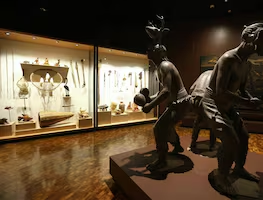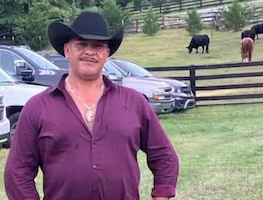This week, President Andrés Manuel López Obrador will travel to three of Mexico’s most violent states to counter what many call a “hands-off” strategy toward drug cartels that has exacerbated tensions with state governors.
A surge in cartel killings in Guanajuato, Colima, and Jalisco, states governed by opposition parties, is threatening to become a political quagmire of finger-pointing for López Obrador ahead of 2021 midterm elections.
Official numbers released by federal authorities show that Guanajuato has the highest homicide rate in the country after registering 1,903 homicides between January and May. Jalisco registered 201 homicides in May alone. Meanwhile, Colina registered 7.6 homicides per every 100,000 inhabitants in May.
During one of his news conference, López Obrador said: “I am going to these states because they have the toughest problems with violence and especially homicides,” and added, “I am going to support the people with my presence and tell them that despite the public, notorious differences we have with the state governments, this is a matter that concerns everyone and we have a duty to act together.”
Today, his first stop was in Irapuato, Guanajuato, a region besieged by “El Marro” and the Santa Rosa de Lima Cartel. During his visit, the President sent a message of cooperation and coordination.
Governor Diego Rodríguez announced that he had started participating in the president’s daily security cabinet briefings.
“If I want more coordination, I do have to do more on my part,” said Rodríguez, adding that he began participating earlier this month, days after gunmen killed 27 men in a drug rehab center in Irapuato.
A group in Guanajuato called “A Tu Encuentro” or “Finding You,” which is fighting to find at least 135 people who have disappeared during the drug violence, released a video Tuesday asking for a meeting with the state’s governor and the president today. It called for the two to set aside their differences.
“I hope he (López Obrador) comes to help, and that his visit helps solve the violence problem, and not just pour more fuel on the fire of the political confrontation between the state and the federal governments,” group leader José Gutierrez said earlier.
All three of the states are seeing vicious cartel turf wars.
In Guanajuato, the Jalisco Nueva Generación Cartel and the local Santa Rosa de Lima Cartel are engaged in a fight that has left over 1,900 people dead in the first five months of 2020, including the slaughter of the recovering addicts at a rehab center in Irapuato on July 1. According to López Obrador, 70% of these killings occurred between criminal groups.
The federal government has installed National Guard barracks at several points in Guanajuato, but the guards and the army just conduct periodic patrols. The tough work of investigating, serving arrest warrants, and responding to emergency calls has been left largely to state and local police, who are outgunned. In the first six months of this year, at least 60 police officers have been killed in Guanajuato, according to the civic group Causa en Común.
Today, Defense Secretary Luis Cresencio Sandoval said there were 7,500 National Guardsmen in Guanajuato and López Obrador applauded a dramatic decrease in fuel theft in the state.
“The problem grew and has been allowed to grow, and we have to look at whether there has been collusion, that is, criminal conspiracy, between the criminals and officials,” the Mexican President said after the massacre at a Guanajuato rehab center.
While López Obrador has pointed toward the opposition governors for the violence, the opposition cites his “hands-off” policy with cartels. In October 2019, federal authorities ordered the release of Ovidio Guzmán, “El Chapo" Guzmán’s son, after gunmen staged a massive attack in Culiacán, Sinaloa.
Governor Rodríguez, of the conservative National Action Party, said that “coordination between all levels of government is indispensable to reduce the violence.”
Guanajuato is the biggest exporting state not located on the U.S. border and has tried to keep its industry untouched. But it may have become the epicenter of a much larger, titanic struggle between Mexico’s two most powerful cartels: Jalisco and Sinaloa.
In a video posted in June, José Antonio Yépez aka “El Marro,” the leader of the Santa Rosa Cartel, spoke about allying himself with the Sinaloa Cartel to fight off the incursion by Jalisco, which experts say may have already created a kind of proxy war in Guanajuato.
“Even though it rankles me to work for these guys from the border or the guys from Sinaloa ... I will serve any of those guys before I let the other ones come in,” said a man identified as Yépez.
López Obrador has also had public differences with the governor of Jalisco state, Enrique Alfaro, over everything from measures to limit the spread of COVID-19, to how to handle dissent and drug violence.
Alfaro has claimed the federal government has sought to destabilize Jalisco and threatened him.
Jalisco state has accounted for about 29% of all bodies pulled from clandestine burial pits. A total of 487 bodies were found in the state between December 1, 2018, and the end of June.
“Our country faces a common enemy, organized crime groups that seek to defeat the government,” Alfaro wrote recently. “Now is the time to close ranks.”
López Obrador will visit Colima on Friday. In June, federal judge Uriel Villegas Ortiz and his wife were murdered inside their home. Weeks later, the Attorney General’s Office arrested a member of the bloody Jalisco Nueva Generación Cartel for his alleged involvement in the crime.
However, Security Minister Alfonso Durazo Montaño announced he wouldn’t be present during the trip.
gm










